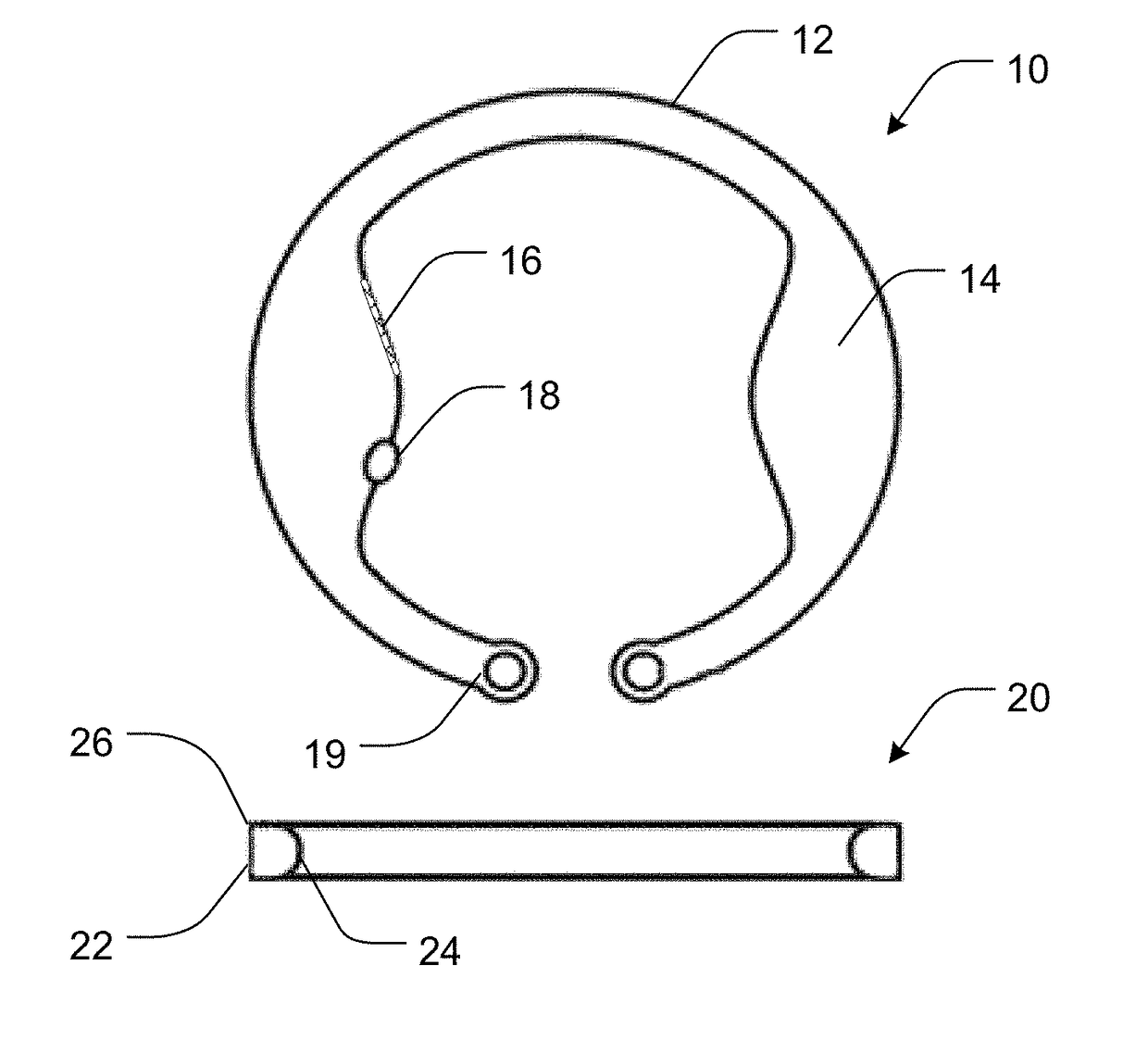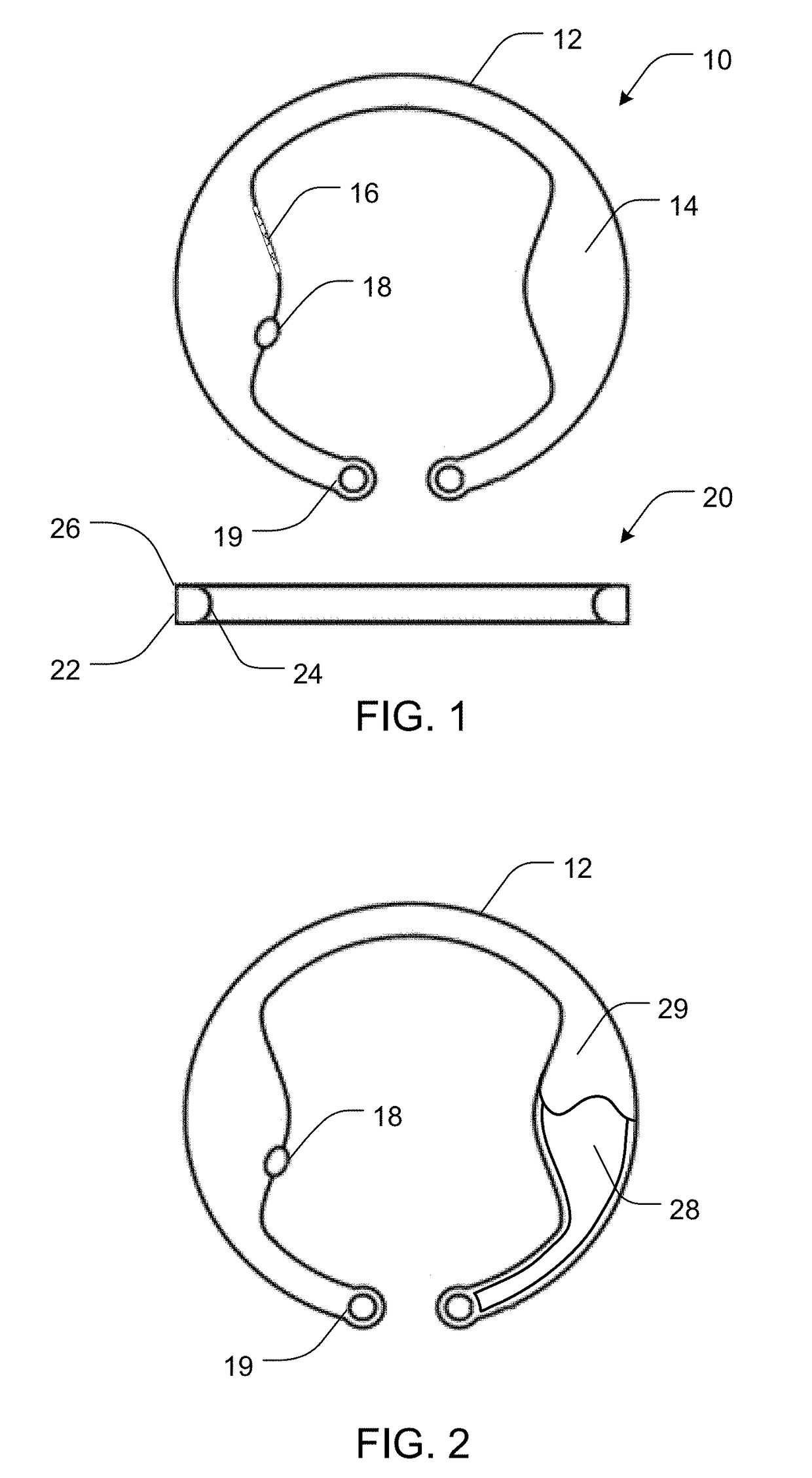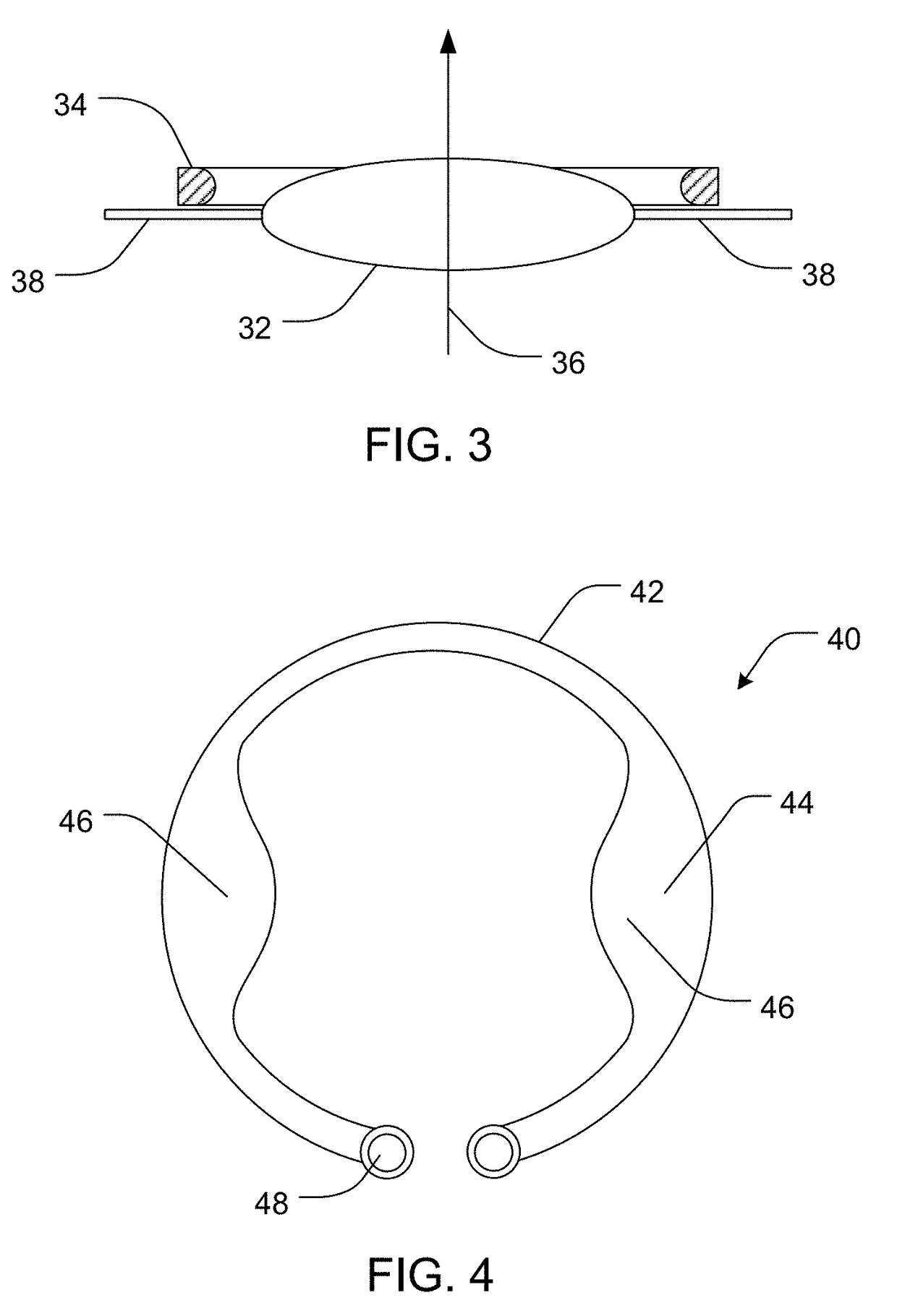Intraocular drug delivery device and associated methods
a drug delivery and intraocular technology, applied in the field of ophthalmology, can solve the problems of retinal detachment, endophthalmitis, and other complications, and achieve the effects of reducing the risk of side effects, and improving the safety of patients
- Summary
- Abstract
- Description
- Claims
- Application Information
AI Technical Summary
Benefits of technology
Problems solved by technology
Method used
Image
Examples
example 1
[0068]A standard clear-corneal phacoemulsification with intraocular lens (Acrysof SA60AT; Alcon) implantation was performed on 35 rabbits. At the time of each surgery, an intraocular device containing an active agent was inserted into a lens capsule of each rabbit. The rabbits were divided into 4 groups, depending on the active agent in the intraocular device. Devices were loaded with 5-15 mg of either Avastin, Timolol, Brimonidine, or Latanoprost. Each group was evaluated to determine the intraocular device and lens stability, capsular fibrosis, and healing of cataract wounds and anterior segment. A subgroup of eyes was evaluated weekly for 4 weeks for inflammation and harvested at 1 month for histopathologic evaluation of capsular and CDR integrity.
example 2
[0069]The surgery and setup as described in Example 1 was repeated, with the exception that aqueous and vitreous taps were performed biweekly and assayed for drug concentrations with HPLC and / or ELISA. In each drug group, half of the eyes were harvested at one month and the other half at two months. This was accomplished as follows: immediately after sacrificing the rabbit and enucleating the eye, the eye was frozen in liquid nitrogen to prevent perturbation and redistribution of drug in eye tissues. The eye was then dissected into 3 parts (aqueous humor, vitreous and retina / choroid layer) to evaluate anatomic toxicity and tissue drug concentration. The intraocular device was retrieved and assessed for remaining drug amounts. The distribution profile of the intraocular device was compared with the conventional intravitreal injection of 2.5 mg / 0.1 cc Avastin® for direct comparison of the different delivery methods.
[0070]At 2 and 4 months, eyes from the remaining subgroups of rabbits ...
example 3
[0071]Three intraocular devices were implanted into eyes of New Zealand white rabbits under general anesthesia after lens extraction (phacoemulsification technique). Two of the devices were loaded with Avastin and one was loaded with the contrast agent Galbumin as a control. Proper intraocular device position was verified by MRI as well as clinical examination.
[0072]The rabbits were sacrificed and the eyes are removed and assayed after 1 week post implantation. Avastin was detected by ELISA in the retina and vitreous at concentrations of 24-48 mcg / mL, and was not present in the control rabbit eye. FIG. 5 shows the amount of Avastin assayed per ocular region at 1 week post implantation.
PUM
| Property | Measurement | Unit |
|---|---|---|
| Time | aaaaa | aaaaa |
| Time | aaaaa | aaaaa |
| Thickness | aaaaa | aaaaa |
Abstract
Description
Claims
Application Information
 Login to View More
Login to View More - R&D
- Intellectual Property
- Life Sciences
- Materials
- Tech Scout
- Unparalleled Data Quality
- Higher Quality Content
- 60% Fewer Hallucinations
Browse by: Latest US Patents, China's latest patents, Technical Efficacy Thesaurus, Application Domain, Technology Topic, Popular Technical Reports.
© 2025 PatSnap. All rights reserved.Legal|Privacy policy|Modern Slavery Act Transparency Statement|Sitemap|About US| Contact US: help@patsnap.com



